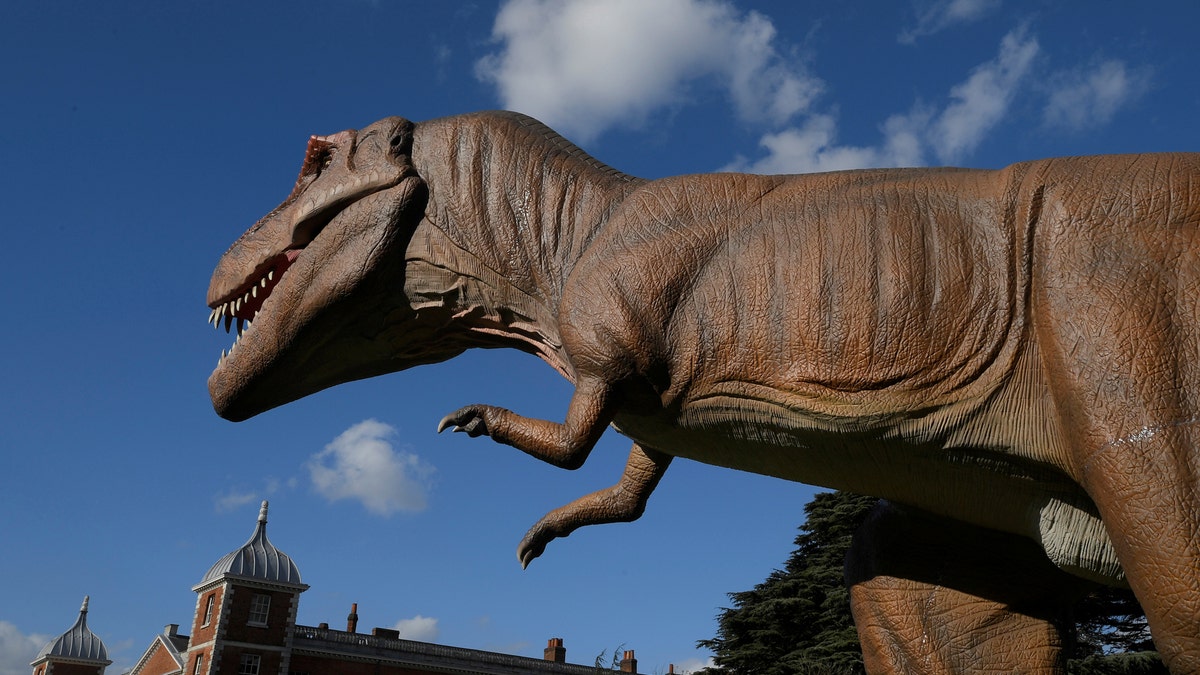
File photo: An animatronic life-size dinosaur is seen ahead of an interactive exhibition, Jurassic Kingdom, at Osterley Park in west London, Britain, March 31, 2017. (REUTERS/Toby Melville)
Scientists may have finally worked out how dinosaurs evolved into birds.
Experts have isolated a genetic sequence which they believe was present in dinosaurs before and during their evolution into birds.
Modern birds descended from a group of two-legged dinosaurs called theropods, whose members included the fearsome T-Rex and smaller Velociraptors.
Fossils show bird-like traits including feathers, light bones, air sacs and three-digit forelimbs.
But identifying genomic DNA changes during this evolutionary transition has remained a challenge.
Tohoku University researchers have isolated a gene sequence they believe was present in dinosaurs before and during their transition to the feathered creatures we recognise today.
The international group of researchers have found a specific gene sequence which could be associated with the evolution of flight feathers in the dinosaur era.
In a journal published in Nature Communications, lead author Ryohei Seki wrote: "Flight feathers are one of the most prominent evolutionary innovations in the avian lineage, conferring not only the ability for flight but also, in some species, important roles in other biological functions, such as territorial displays and courtship ritual.
"Birds have two regions that have flight feathers: along the posterior edges of the wings and in the tail.
"Feathered dinosaur fossils have provided significant new information on the evolutionary origin of flight feathers."
A new species of enormous dinosaur that was as long as two-and-a-half double decker buses was recently discovered.
